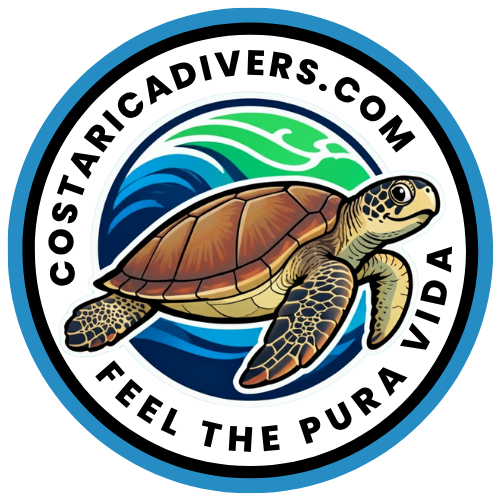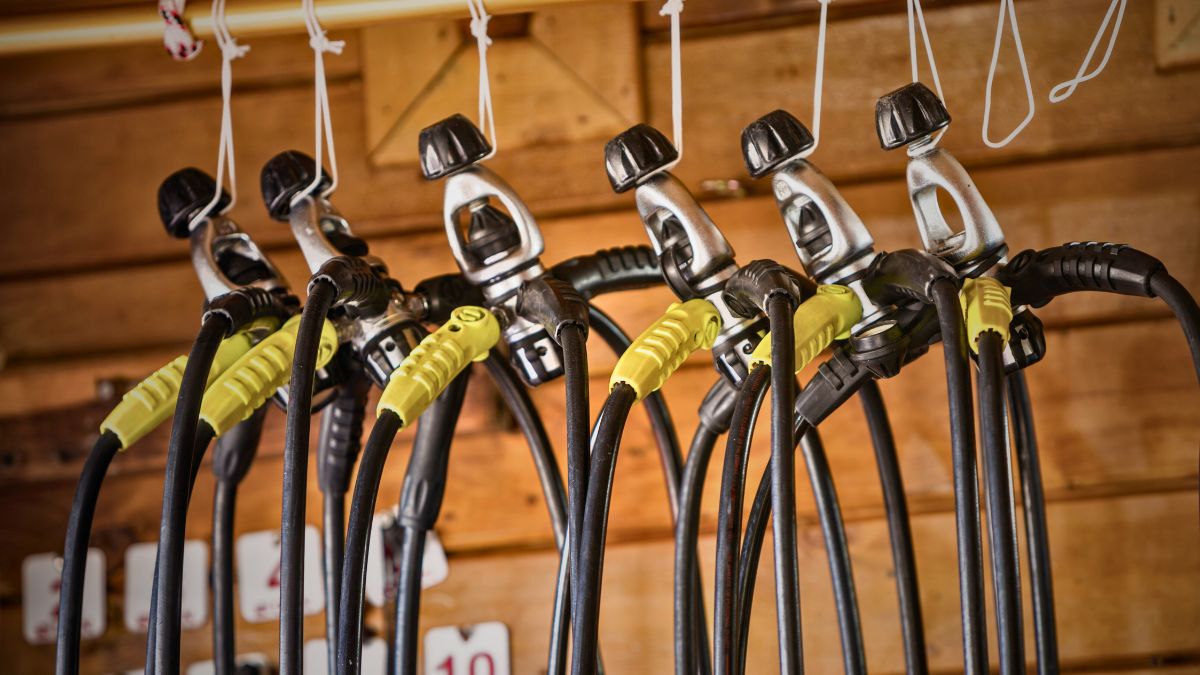Last week, a student asked me a question I hear all the time: “what is the best scuba diving certification?” She had been researching online for hours, reading forum debates about PADI versus SSI, and was more confused than when she started.
I smiled and told her the truth. The answer isn’t as simple as picking the “best” brand. It’s about understanding what these certifications actually mean and choosing what works for your specific diving goals.
Dive certifications exist to ensure you have the proper knowledge and skills to explore underwater safely. Imagine your dive buddy tells you he’s a “diver” but nothing else. You’d want to know his training level, depth limits, and experience. That’s exactly why we need a standardized certification system.
In this guide, I’ll break down the main scuba diving organizations, compare their certification levels, and help you choose the right path for your underwater adventures.
Why Do You Need a Scuba Diving Certification?
Certification means you understand how to use hand signals properly, read pressure and depth gauges, operate each piece of equipment, and handle dangerous situations underwater. It’s your proof that you’ve completed standardized training and can dive safely.
Once you earn your basic diving certification, you can build on it by gaining experience or pursuing advanced certifications. Some divers even work toward professional credentials that allow them to teach or work underwater.
Is It Illegal to Dive Without Certification?
Here’s the short answer: diving without a license isn’t illegal, but it’s incredibly foolish.
Think about it. Would you go underwater with equipment you don’t know how to use, in an environment whose rules you don’t understand? That’s asking for trouble. No reputable dive center will let you dive without certification anyway. They won’t rent you gear, fill your tank, or take you on dive trips.
So technically legal? Yes. Actually advisable? Absolutely not.
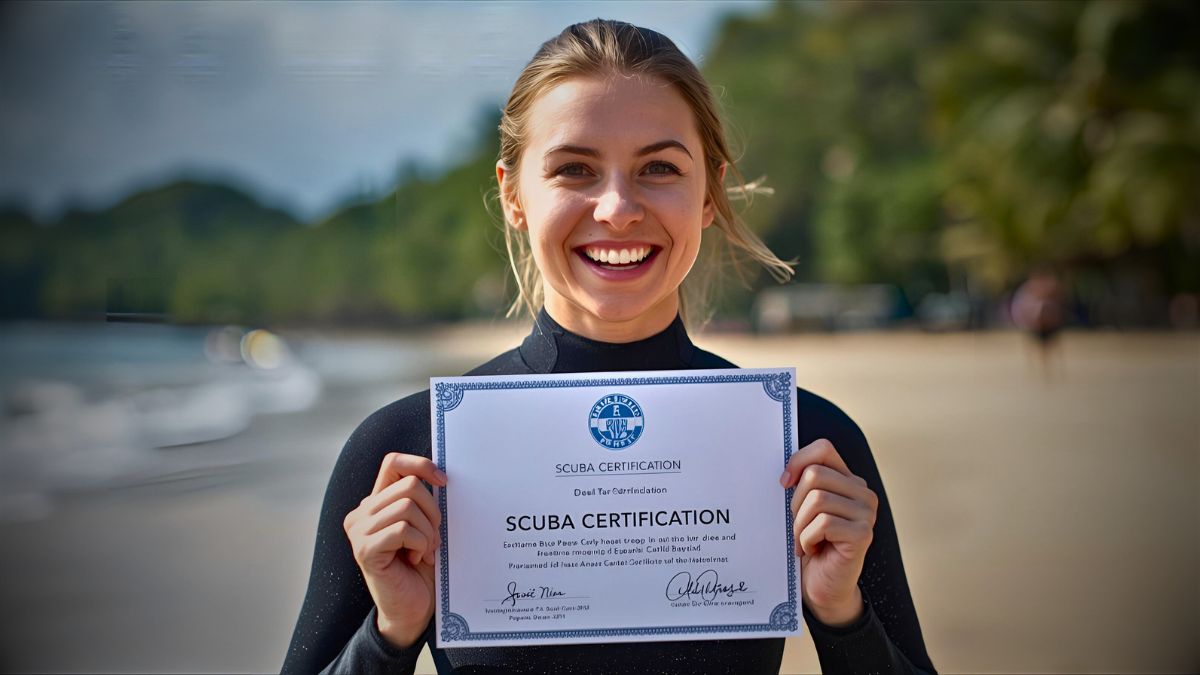
What Does Scuba Certification Actually Teach You?
A proper scuba course covers theory, confined water practice, and open water dives. You’ll learn diving physics, how pressure affects your body, equipment assembly and maintenance, emergency procedures, and buddy communication.
You’ll practice skills like mask clearing, regulator recovery, buoyancy control, and controlled ascents. By the end, you’ll be able to plan dives, conduct them safely with a buddy, and handle common problems underwater.
The certification card you receive isn’t just a piece of plastic. It’s your passport to dive sites around the world.
Did you know? Over 25 million PADI certifications have been issued worldwide since the organization was founded in 1966. That’s roughly the entire population of Australia!
Where Did Diving Certifications Come From?
I think it’s important to understand the history here because it explains why all the major organizations recognize each other’s certifications.
Who Invented the First Diving Certification Program?
The famous Jacques-Yves Cousteau was the undisputed pioneer of recreational diving as we know it today. In 1959, he founded CMAS (Confédération Mondiale des Activités Subaquatiques), the first organization for divers.
CMAS developed the first training program based on scientific research. Their mission included advancing technical progress and conducting research in diving. All current commercial training programs trace their roots back to procedures developed by CMAS.
This common foundation created a system where different organizations could recognize each other’s certifications. Pretty smart, right?

What Are ISO Standards for Scuba Diving?
In recent years, the International Organization for Standardization (ISO) created official standards for training recreational divers. Although refreshed and modernized, these standards are also based on original CMAS programs.
The ISO standards that apply to recreational diver training include:
- ISO 11121: Introductory programs to scuba diving
- ISO 24801-1: Diver Level 1 (Supervised Diver)
- ISO 24801-2: Diver Level 2 (Autonomous Diver)
- ISO 24801-3: Diver Level 3 (Dive Leader)
Implementation of ISO standards has led to further cooperation between training agencies. External auditors from organizations like the European Underwater Federation and RSTC (Recreational Scuba Training Council) now evaluate certification agencies against these standards.
This means when you get certified through any major organization, you’re receiving training that meets internationally recognized safety and education standards.
Which Is the Largest Scuba Diving Organization in the World?
Although CMAS started it all back in 1959, times have changed. The race for the title of most dynamic diving organization has been won for years by PADI.
The Professional Association of Diving Instructors (PADI) is currently the largest diving organization in the world. It’s estimated that PADI certifies between 60-75% of all recreational divers worldwide. That’s massive market dominance.
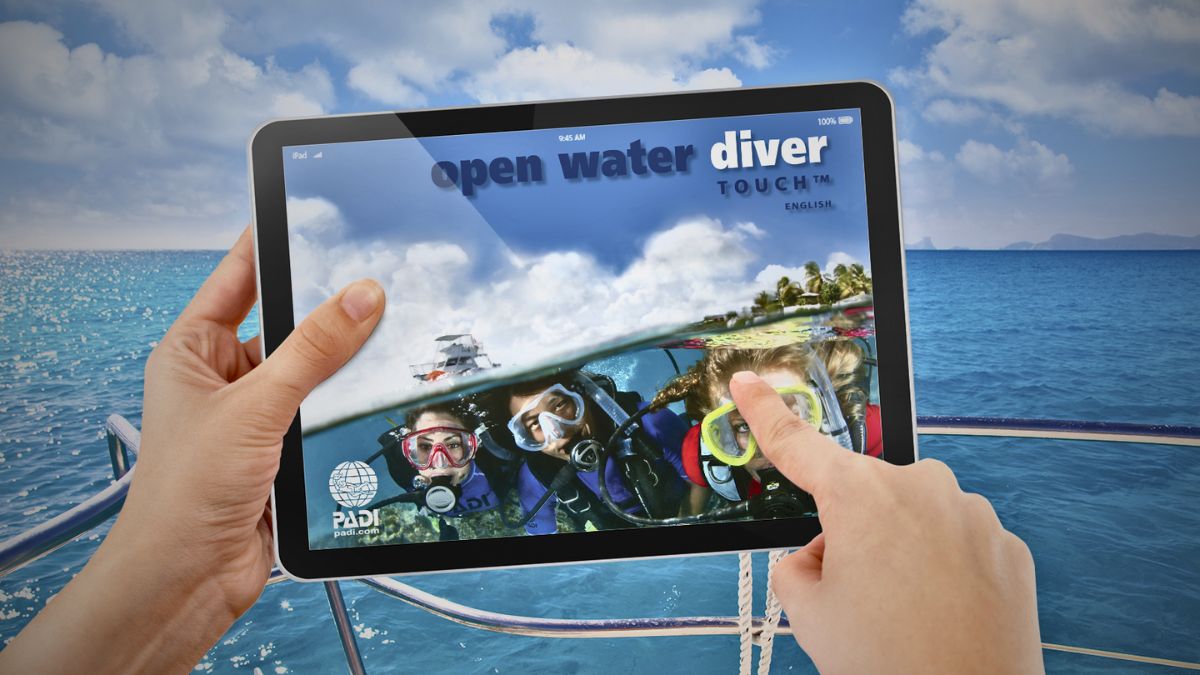
PADI certification offers many benefits, including online eLearning that you can start anywhere in the world. PADI dive licenses are also digital, so any certified dive center can easily verify your certification. You don’t even need to bring your physical card with you, though you certainly can if you want.
But PADI isn’t the only player. According to available statistics, SSI had issued over 8 million certifications by 2019, NAUI had issued over 2.5 million, and SDI/TDI had issued over 1 million.
Other organizations like CMAS, BSAC, and RAID also issue certifications similar to PADI. They’re just not as widely recognized globally.
What Are the Main Scuba Diving Certification Organizations?
Let me break down the major players in the certification world. Each has its own philosophy and approach, but they all teach essentially the same core skills at beginner levels.
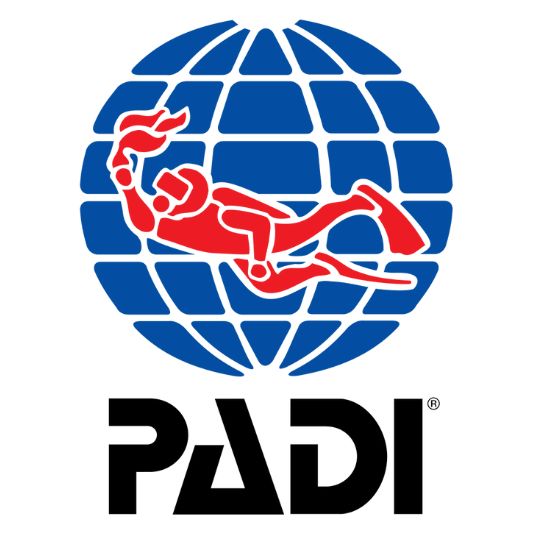
What Makes PADI Certification Different?
PADI focuses on making diving accessible and convenient. Their modular system lets you progress at your own pace. The eLearning platform is excellent and you can complete theory online before even arriving at a dive destination.
PADI instructors work as independent professionals. They carry their own liability insurance and can teach at multiple dive centers or work freelance. This creates flexibility but also means instructor quality can vary significantly.
The PADI system is heavily standardized. Every Open Water course worldwide follows the same basic structure. This consistency means you know exactly what to expect regardless of location.
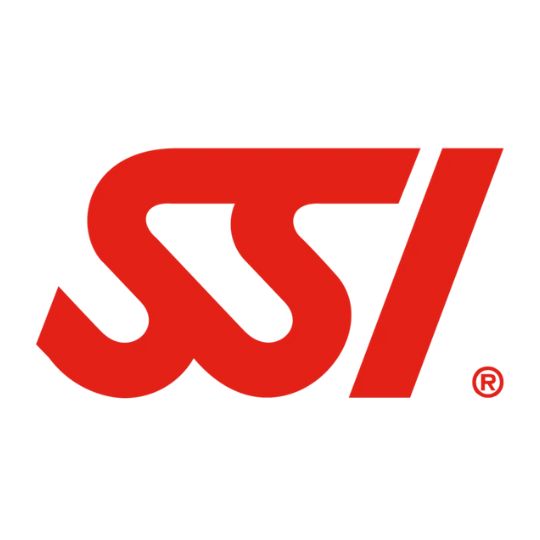
How Does SSI Certification Compare to PADI?
Scuba Schools International (SSI) is the second-largest training agency. Their main difference? SSI instructors must work through authorized dive centers or resorts rather than working independently.
SSI believes this ensures instructors stay current on new procedures and maintains better quality control. They also offer a unique feature on their certification cards: dive recognition stickers. After 100 dives, you receive a Century Diver card. Cards are upgraded at 500, 1,000, and 5,000 dive milestones.
The SSI digital learning platform is also excellent and their certifications are recognized worldwide. For most recreational divers, the practical difference between PADI and SSI is minimal.
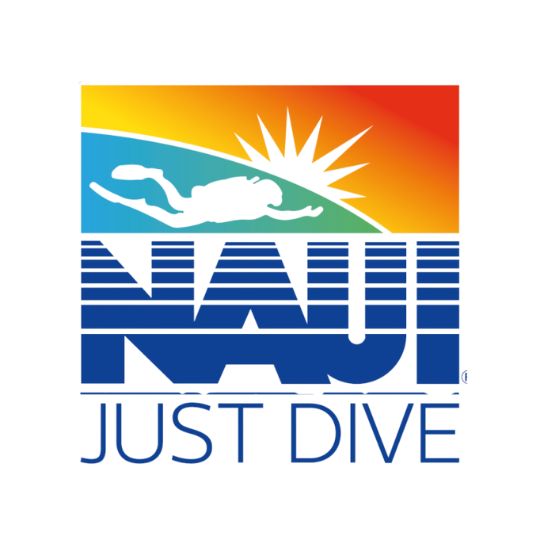
Why Do Some Divers Choose NAUI Certification?
The National Association of Underwater Instructors (NAUI) is one of the oldest agencies, founded in 1959. They’re a non-profit organization with a reputation for thorough, academically-oriented training.
NAUI is popular with scientific divers, military programs, and academic institutions. Organizations like Walt Disney World Resort, United States Navy SEAL Teams, and NASA’s Neutral Buoyancy Laboratory specifically choose NAUI for their diver education programs.
NAUI courses often go deeper into the “why” behind diving principles. If you want to truly understand the physics and physiology, not just learn procedures, NAUI might appeal to you.
The trade-off? NAUI courses can take slightly longer and require more academic study. But you’ll have a solid theoretical foundation.
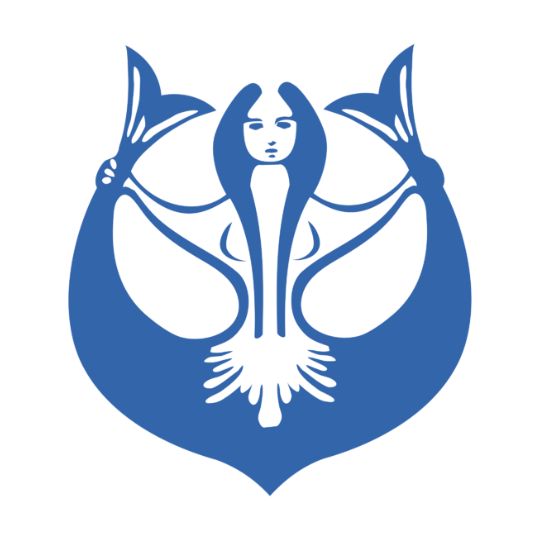
What Is Special About CMAS Diving Certification?
CMAS (World Confederation of Underwater Activities) uses a unique star-based rating system rather than named levels like “Open Water” or “Advanced.”
CMAS teaching has a fairly traditional style and belongs within official diving standards. The practical component is high priority in all courses. CMAS certifications are valid worldwide and recognized by other agencies.
CMAS is particularly strong in Europe and tends to emphasize self-reliance and technical skills earlier than some other organizations. Their training can be more demanding but produces highly competent divers.

Should I Consider SDI Certification?
Scuba Diving International (SDI) was created in 1998 as the recreational division of Technical Diving International (TDI), the world’s largest technical training agency.
SDI is an excellent choice if you think you might eventually want to pursue technical diving. Their recreational courses integrate skills that translate well into technical training. SDI also requires dive computers from the very beginning of training, which I think is smart.
SDI has streamlined course materials to focus on essential academics (all theory can be completed online) while emphasizing practical diving skills. They have training centers in over 100 countries.
Fun fact: There are more than 50 scuba diving certification agencies worldwide, but the top 5 organizations certify over 95% of all recreational divers.
What Are the Different Levels of Scuba Diving Certification?
Every diver starts somewhere. The certification system creates a clear progression path from complete beginner to professional instructor. Here’s what you need to know about each level.
What Is a Discovery or Try Dive Program?
Before committing to a full certification course, most organizations offer an introductory experience. These programs let you try scuba diving under direct instructor supervision without investing significant time or money.
PADI calls it: Discover Scuba Diving
SSI calls it: Try Scuba
SDI calls it: Scuba Discovery
CMAS calls it: Discover Scuba
NAUI calls it: Try Scuba or Passport Scuba
These programs typically include a brief theory session, pool or confined water practice, and one shallow open water dive with your instructor. You’ll use full scuba equipment but the instructor handles everything.
Age requirements typically start at 8-10 years old, and maximum depth is usually 5-12 meters depending on the organization.
Important note: this is not a certification course. You don’t receive a license afterward. However, it’s a fantastic way to see if you enjoy diving before committing to the full course.
What Is Open Water Diver Certification?
This is where your real diving journey begins. Open Water Diver is the first certification level and the foundation for everything that follows.
After completing this course, you can dive to 18 meters (60 feet) depth with a certified buddy. You’ll be able to plan dives, rent equipment worldwide, and dive independently without professional supervision.
Typical course requirements:
- Minimum age: 10-15 years (varies by organization; younger students receive “Junior” certification)
- Theory: 5-6 sessions (available online through eLearning)
- Confined water: 5-6 pool sessions
- Open water: 4-5 ocean or lake dives
- Duration: 3-5 days
- Cost: $400-$600 typically
The theory covers diving physics, physiology, equipment, dive planning, and safety procedures. Confined water sessions teach fundamental skills like mask clearing, regulator recovery, buoyancy control, and emergency procedures. Open water dives let you apply these skills in real diving conditions.
Every diver remembers their first Open Water course. It’s where you fall in love with the underwater world.
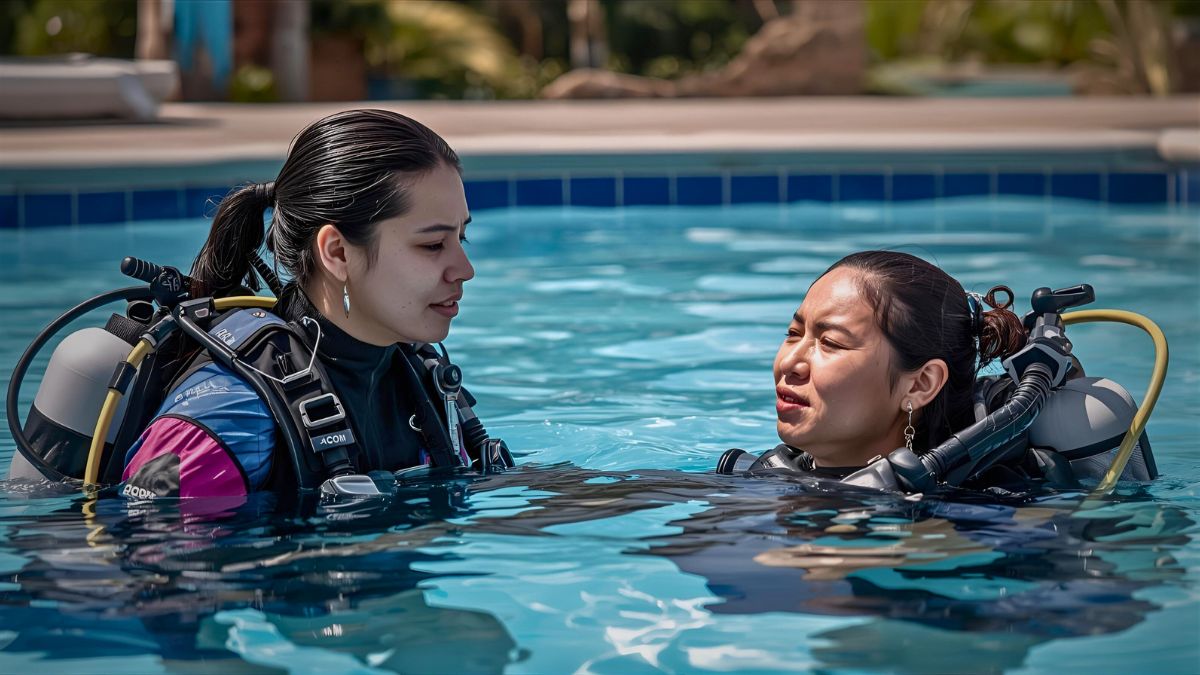
What Is Advanced Open Water Certification?
You know the saying that appetite grows with eating? After your first certification, you’ll probably want more.
Advanced Open Water takes your skills to the next level. You’ll be authorized to dive to 30 meters (100 feet) and your overall diving competence will improve significantly.
Typical course structure:
- Minimum age: 12-15 years
- Prerequisites: Open Water Diver certification
- Structure: 5 specialty adventure dives
- Duration: 2-3 days
- Cost: $350-$500
Two dives are mandatory for all students: deep diving (below 18m) and underwater navigation. The other three depend on your interests and what the dive center offers.
Popular options include Peak Performance Buoyancy, wreck diving, night diving, fish identification, search and recovery, and underwater photography.
The idea is to let you sample different diving activities so you can decide what interests you most. Each adventure dive can later be expanded into a full specialty certification.
This is actually my favorite course to teach because students already have basic skills and we can focus on fun, interesting diving rather than survival skills.
What Is Rescue Diver Certification?
In my opinion and the opinion of many experienced divers, Rescue Diver is the best course you can take. It transforms you from someone focused on their own diving to someone who can help others.
This course teaches you how to prevent problems, recognize diver stress, respond to emergencies underwater and on the surface, and perform rescues when necessary. You’ll learn to administer emergency oxygen and handle serious situations.
Typical requirements:
- Prerequisites: Advanced Open Water (or equivalent), CPR/First Aid certification within last 24 months
- Structure: Theory, confined water scenarios, open water rescue exercises
- Duration: 3-4 days
- Cost: $450-$600
But let’s be honest here. This course needs to be realistic to be valuable. If you’re training for real ocean emergencies, we can’t just pat ourselves on the back and say how great we are. There will be stress, fatigue, and multiple things happening at once.
Did I scare you? Good. We’re approaching professional-level skills, so it’s time to decide if you want to be a good diver or just a diver with another card.
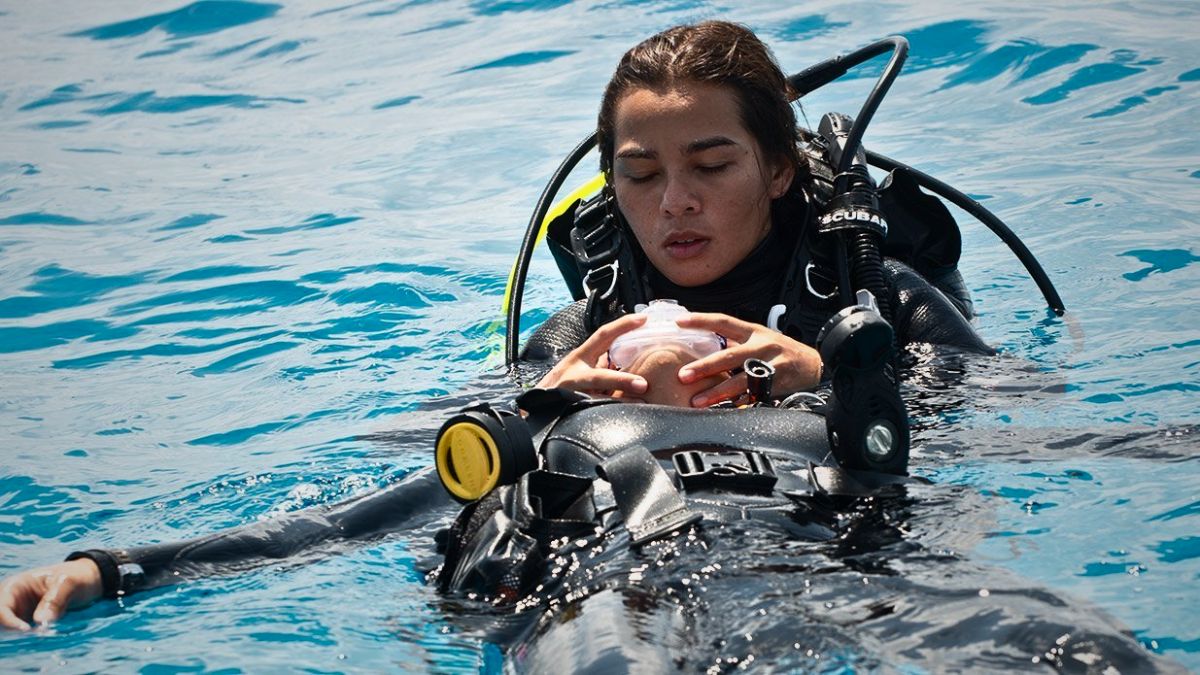
What Is Master Scuba Diver Certification?
PADI Master Scuba Diver is the highest recreational level. It’s not a course but a rating that recognizes your training and experience.
Requirements:
- Rescue Diver certification
- Minimum 5 specialty certifications
- Minimum 50 logged dives
This title means you’re an experienced, skilled recreational diver. It’s a pleasure to have Master Scuba Divers as buddies because they know what they’re doing underwater.
Important clarification: Master Scuba Diver is NOT the same as Divemaster. One is the highest recreational rating, the other is the first professional level. Don’t confuse them.
What Is Divemaster Certification?
Divemaster is the first professional level in diving. This is where you cross from recreational diving into the industry.
As a Divemaster, you can lead certified divers, assist instructors during courses, conduct Discover Scuba Diving programs, and work at dive centers. Many Divemasters recover their training costs by working in the industry.
Typical requirements:
- Minimum age: 18 years
- Prerequisites: Rescue Diver, CPR/First Aid, 40 logged dives at start (60 by completion)
- Duration: 4-8 weeks depending on program intensity
- Cost: $1,200-$2,000
The knowledge you gain during Divemaster training is among the most advanced in recreational diving. You’ll study physiology, physics, equipment from a technical perspective, risk management, and leadership skills.
Few things are as satisfying as getting paid to do something you love while helping others achieve their diving dreams.
How Do Certification Levels Compare Between Organizations?
This is where it gets interesting. Despite different names and slight variations, certification levels are largely equivalent between major organizations. Here’s a detailed comparison:
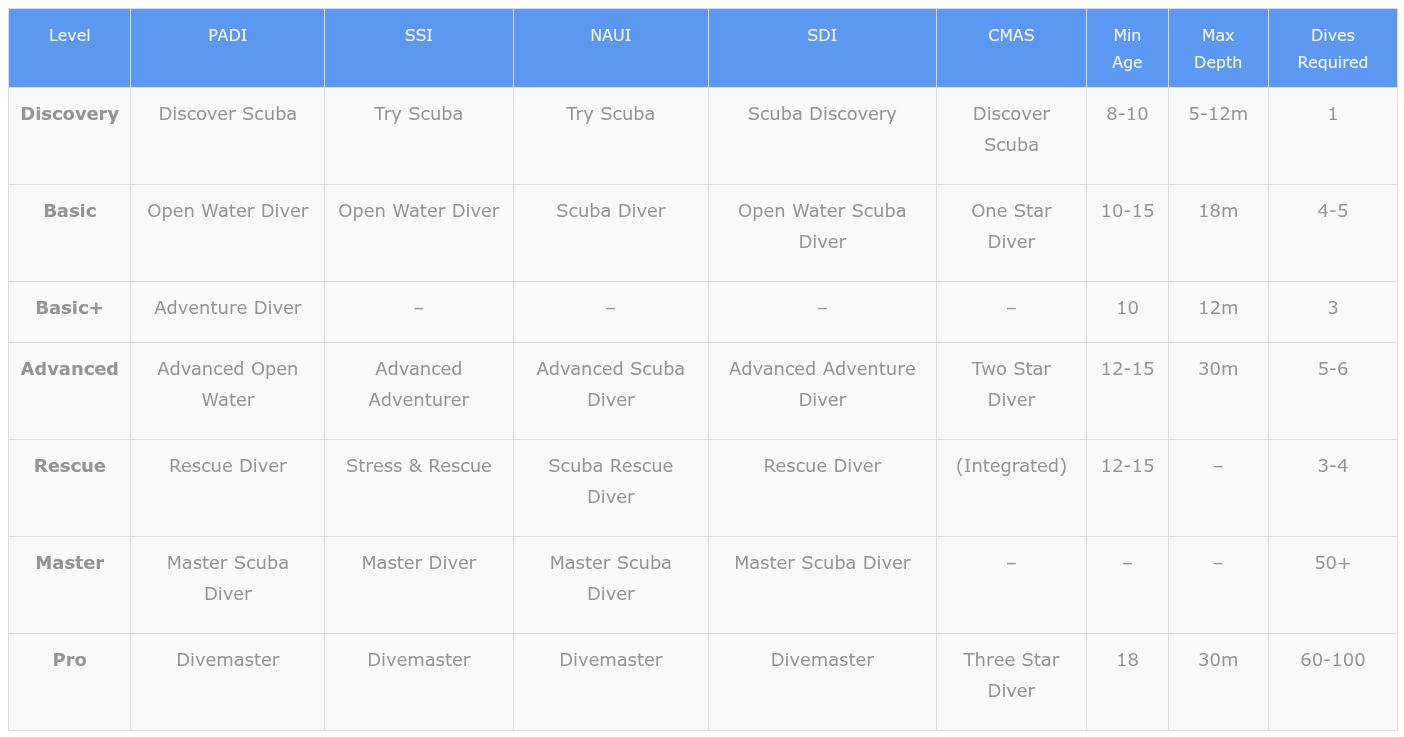
This equivalency means if you start with SSI Open Water, you can easily continue with PADI Advanced without redoing the basic course. The organizations recognize each other’s training.
Pretty convenient, right?
What Are Scuba Diving Specialty Certifications?
Once you have your Open Water certification, a world of specialty courses opens up. These are focused training programs that teach specific skills or environments.
Which Specialty Certifications Should Beginners Consider?
Some specialties are more useful than others. Here are my top recommendations:
Enriched Air Nitrox
This is probably the most valuable specialty. Nitrox allows longer bottom times and shorter surface intervals. Almost essential for serious diving.
Peak Performance Buoyancy
Improves your buoyancy control dramatically. Better buoyancy means less effort, lower air consumption, and better protection for coral reefs.
Deep Diver
Qualifies you to dive beyond 18 meters up to 40 meters. Opens access to many interesting dive sites.
Underwater Navigation
Makes you confident navigating underwater using natural references and compass. No more getting lost on dives.
Night Diving
Night diving completely transforms familiar dive sites. Many creatures only come out at night. It’s like diving on an alien planet.
Other popular specialties include wreck diving, underwater photography, search and recovery, drift diving, and dry suit diving. The list goes on and on.
Some specialties have prerequisites. For example, you need Advanced Open Water before taking ice diving or wreck penetration courses.

So, What Is the Best Scuba Diving Certification for You?
Here’s the honest truth I tell every student who asks this question: for most recreational divers, the organization matters far less than you think.
The quality of your instructor and dive center matters infinitely more than whether you choose PADI, SSI, or NAUI. A great instructor from any organization will give you better training than a mediocre instructor from the “best” organization.
That said, here are practical factors to consider:
Geographic availability
Choose an organization with dive centers in locations you want to dive. PADI has the widest global reach.
Career plans
If you might want to work as a diving professional, PADI offers the most job opportunities worldwide due to market dominance.
Learning style
Prefer online theory? PADI and SSI have excellent eLearning platforms. Want deeper academic content? Consider NAUI.
Technical diving plans
Planning to pursue technical diving eventually? SDI connects directly to TDI technical training.
Local options
Sometimes the best organization is simply the one with a quality dive center near you or at your vacation destination.
How Much Does Scuba Certification Cost?
Costs vary by location, organization, and what’s included. Here are typical price ranges:
- Discover Scuba Diving: $100-$150
- Open Water Diver: $500-$800
- Advanced Open Water: $350-$500
- Rescue Diver: $450-$600
- Divemaster: $1,200-$2,000
In Costa Rica, certification courses are often more affordable than in the United States, Europe, or Australia while offering warm water, incredible marine life, and year-round diving conditions.
Be careful with prices that seem too good to be true. Extremely cheap courses often cut corners on instructor-to-student ratios, equipment quality, or training time.
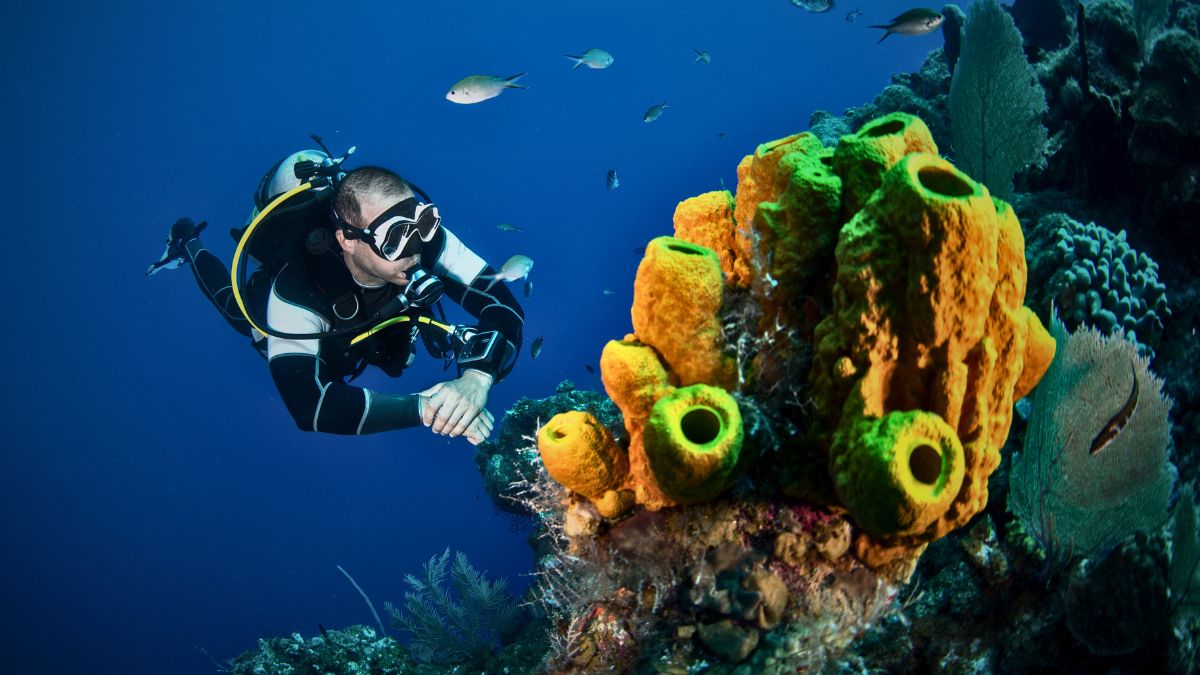
How Long Does It Take to Get Certified?
- Discovery dive: Half day (3-4 hours)
- Open Water: 3-5 days
- Advanced Open Water: 2-3 days
- Rescue Diver: 3-4 days
- Divemaster: 4-8 weeks
Many dive centers offer accelerated schedules for travelers. You can complete Open Water theory online before your trip, then finish pool and open water sessions in 3-4 intensive days.
Working professionals often split training across weekends over several weeks. The eLearning flexibility makes this very doable.
What Should I Look for in a Dive Center?
This is more important than which organization you choose. Here’s what I recommend checking:
Instructor credentials
How experienced is your instructor? How many students have they certified? Do they treat diving as a passion or just a job?
Equipment quality
Are tanks, regulators, and BCDs well-maintained? Is equipment modern or ancient?
Class sizes
Smaller groups (4 students or less per instructor) provide better learning and safety.
Boat and facilities
If diving from boats, are they safe and well-equipped? Are facilities clean and professional?
Reviews and reputation
Check online reviews, but look for patterns rather than individual complaints.
Safety culture
Does the center prioritize safety over convenience? Do they cancel dives in bad conditions?
Choose a professional training center where facilities, boats, and equipment are in optimal condition. Look for an experienced instructor who makes you feel comfortable and who treats diving not as a job but as a passion.
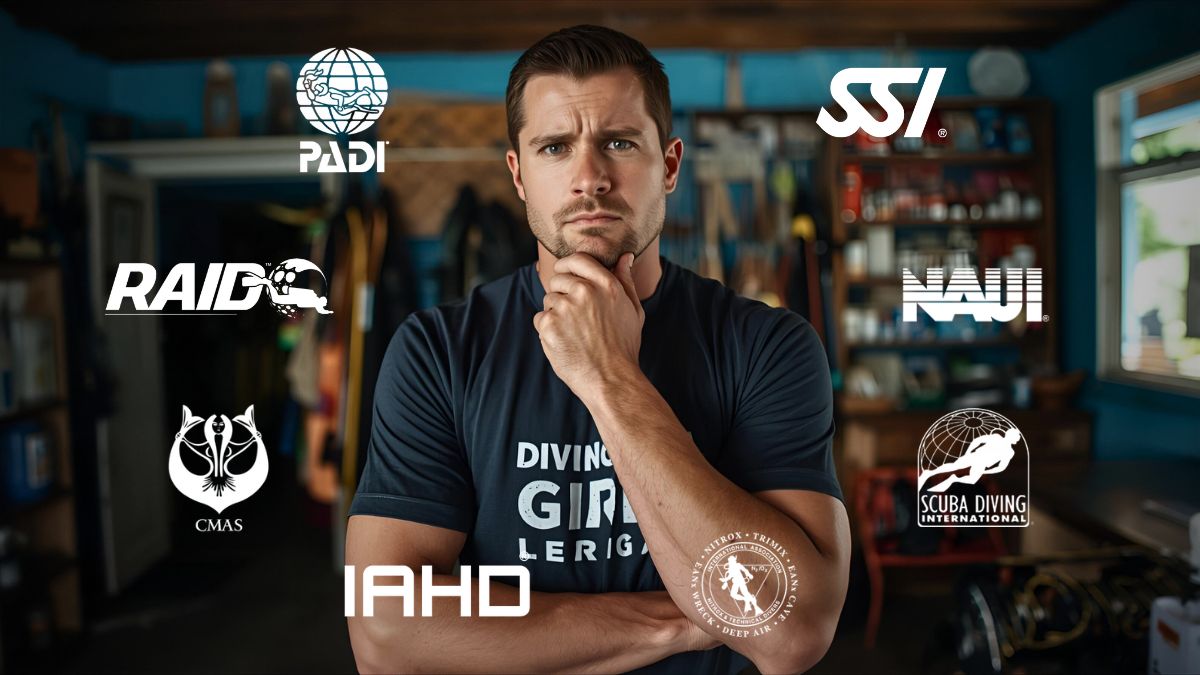
Best Scuba Diving Certification – Final Thoughts
Let me bring this back to where we started. The logo doesn’t matter. The plastic card in your wallet doesn’t matter either.
What counts above all are your skills and experience. A Master Scuba Diver from any organization with 200 logged dives will outperform a newly certified Open Water diver with a card from the “best” organization.
The best scuba diving certification is the one that:
- Comes from quality training with a passionate, experienced instructor
- Fits your schedule and budget
- Is available at locations you want to dive
- Connects to your longer-term diving goals
All the major organizations (PADI, SSI, NAUI, SDI, CMAS) meet ISO standards and produce competent divers. They recognize each other’s certifications. You can’t really make a “wrong” choice among them.
The most important thing is not organization but skills.
In your free time, read and expand your skills. Be hungry for knowledge and new experiences. This is how you become a good diver, regardless of which training agency issues your certifications.
Ready to start your diving journey in Costa Rica? We offer the full range of PADI courses from Discover Scuba Diving through professional Divemaster training. Our warm waters, incredible marine life, and experienced instructors create the perfect environment for learning.
Contact us today to discuss which certification path is right for you.
Frequently Asked Questions
Can I switch from SSI to PADI or vice versa?
Yes, absolutely. All major organizations recognize each other’s certifications. You can start with SSI Open Water and continue with PADI Advanced without any problems.
Do I need to recertify periodically?
No. Scuba certifications don’t expire. However, if you haven’t dived in a long time, consider taking a refresher course to reactivate your skills safely.
At what age can children get certified?
Most organizations offer Junior certifications starting at age 10 for Open Water. Discover Scuba programs can start as young as 8 years old.
Is PADI certification recognized everywhere?
Yes. PADI certifications are recognized at dive centers worldwide. The same applies to SSI, NAUI, and other major organizations.
Can I get certified if I don’t know how to swim well?
You need basic swimming ability and water comfort. Most organizations require you to swim 200 meters and tread water for 10 minutes as part of course prerequisites.
How long does my certification card take to arrive?
Digital certifications are available immediately after your instructor processes your course completion. Physical cards typically arrive within 2-4 weeks by mail.
What if I fail the course?
Reputable instructors won’t fail you if you’re trying. They’ll provide extra training until you master the skills. However, you must demonstrate competency before receiving certification.
Sources used in writing this blog
- PADI Official Website – Professional Association of Diving Instructors
- SSI – Offical Website
- CMAS – Official Website
- SDI – Offical Website
- Divers Alert Network (DAN) – Diving Safety and Medical Information
- Wikipedia
- Many years of diving experience as an instructor
